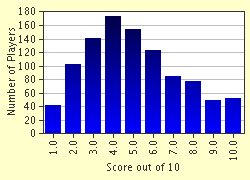Quiz Answer Key and Fun Facts
1. In the kidney there is a microscopic structure which functions to collect the blood filtrate that will eventually form urine. What is this named?
2. Located in the duodenum, which structure is the opening for the common bile duct and pancreatic duct?
3. Which part of the gastro-intestinal tract is associated with the sphincter of Oddi?
4. What is the name of the duct that drains the parotid salivary gland?
5. Located on the left side of the neck, what is the name for the lymph node which enlarges as a sign of abdominal cancer?
6. Which arterial structure is the major source of blood supply to the brain?
7. Formed by the alignment of collagen fibres in the dermis, what is the name for the lines found in the skin which doctors use when planning an incision?
8. Which of these are openings in the brain that allow the cerebrospinal fluid to flow into the subarachnoid space?
9. Found in the heart, what is the name for the bundle of cells that conduct electrical impulses between the atrio-ventricular node and the ventricles?
10. With one of the weirdest names in anatomy, where is the Zonule of Zinn found?
Source: Author
colliwobbles
This quiz was reviewed by FunTrivia editor
crisw before going online.
Any errors found in FunTrivia content are routinely corrected through our feedback system.

